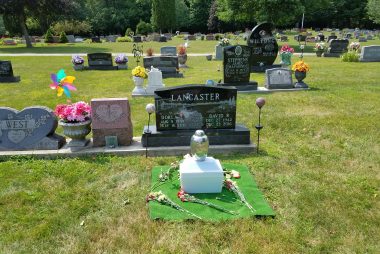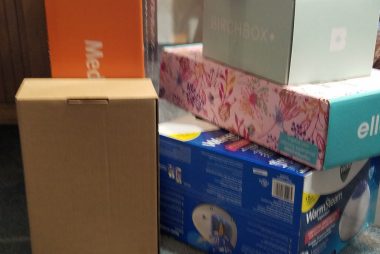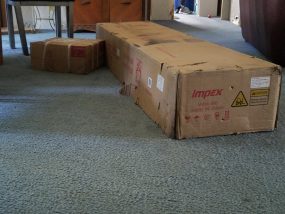Have you heard of Swedish Death Cleaning? No it is not as gruesome as it sounds! In fact, Swedish Death Cleaning was how we began downsizing our belongings to embark on our journey 4 change. Our house was filled by items that took up space, collected dust, and made the rooms seem smaller. Things we had collected, acquired, or "needed" to have-mostly because we had space and could fill it. I had never considered who would have to deal with disposing of our things after I passed away. Then we lost several close family members and had to deal with their belongings and our view was suddenly changed.
With each loss we took home more of their belongings to join our already bulging collection of stuff. Some items we inherited are family heirlooms that will be passed down to our children. Other items I justified keeping because it was expensive or “worth” money. I could not bring myself to get rid of items that I saw as having monetary value even though I had no use for them. After all, hard earned money had been spent to purchase the items and someone might want them someday!
Then I heard about Swedish Death Cleaning.

What Exactly Is Swedish Death Cleaning?
Early last spring, I stumbled upon an article about Swedish Death Cleaning. I had heard of Marie Kondo and her book Life Changing Magic of Tidying Up and the Minimalists guys Joshua Fields Millburn & Ryan Nicodemus, but I had not heard of Swedish Death Cleaning.
I envisioned “minimalists’ as a kind of hippy group pushing peace flowers and Marie as a person who lives in a traditional Japanese home that could be nothing like mine. The messages Marie Kondo or the minimalist guys didn't feel meant for me. The term “Swedish Death Cleaning” however was completely different. After all, I had been thrust into the chores of dealing with my deceased loved one’s belongings for the past few years, I just didn’t know there was a name for it!
Margareta Magnusson is the author of The Gentle Art Of Swedish Death Cleaning, and she had my full attention. The Swedish word döstädning translates to death cleaning which is a term for the organizing, cleaning and de-cluttering you do when you think your time on Earth might be coming to an end. The author had dealt with sorting the possessions of her own loved ones and developed the method in her book to help others lessen the burdens at an already difficult time in your loved one’s life. Her methods help you look at the items you have already in a new light and change your approach to accumulating more and more stuff in the future.

Why I Chose Swedish Death Cleaning
The term “Death Cleaning” resounded within my heart. Without knowing it, I had been “death cleaning” after each loved one passed away. I had been clearing their homes by sorting through their personal, private belongings and assigning a fate to each item. Hoping I was abiding by their wishes, I made guesses of what to do with items. Some things I really wished I did not know my loved one even possessed; let alone did I want to be the one to have to handle disposing of it! Other treasures I longed to ask my lost loved one why they had kept it or what it meant to them. It was so hard!
My experience made me stop and think about my own children and that someday they would need to sift through my belongings. Now I knew personally the deep loss my kids would feel and the range of emotions they would experience. I knew the multitude of decisions they would be asked to make in a very overwhelming time. My heart ached as I realized that I will be unavailable to them for the first time in their lives for advice and guidance. It was sobering knowing I would not be able to ease their burdens when this time came. I realized that by using the Swedish Death Cleaning method I could help them in the future while helping myself get rid of our clutter and an abundance of things now.

How I Got Started Death Cleaning
After reading the book, I did some soul searching about my belongings and my attachment to them. I wondered:
- Do I have so much stuff that the most cherished items are buried?
- Will my mementos bring smiles to my boy’s face or make them wonder if they ever knew me?
- Can they see what was truly important to me or will they be overwhelmed with clutter?
- Will they find comfort in my preparation or burdened by my lack of it?
- Would I be embarrassed by what they had to sort?
Then I dove in. I shared the method with my family and why I was doing it. Working room by room, I created piles of keep, trash, or give away/donate. As I worked, I asked myself:
- Did I LOVE or USE the item, or did I just OWN it?
- Was I holding onto something because at one time it cost a lot of money?
- Was the item important enough to take up space in my home?
- How many towels/pans/lotions/etc. did I REALLY need on hand?
- When was the last time I used or noticed an item?
Before things were sold or donated, I had my close family look through the pile and take things they wanted. As my boys claimed things to take to their homes, they often explained why it stood out in their memories. This was interesting as some of the things they cherished I had not thought were important or anything they'd want. We shared forgotten memories and laughs. I took the opportunity to pass on to them the history of special family heirlooms.
Once they had items they wanted, I invited extended family and friends to sift through the pile. I sold or donated what remained.
Using Swedish Death Cleaning To Downsize Our Belongings
Swedish Death Cleaning was our first step in downsizing. It made us see our belongings differently and to begin evaluating the importance of stuff in our priorities. Our new adventure will require a lot less stuff. We are purging even more daily as we get closer to our transition and it is liberating. As we move into the travel trailer and then build a tiny home, every item we keep or buy must be important to justify the space it will occupy.
We have also discovered that it feels much better to DO stuff then to HAVE stuff! We now choose to make memories not collect items.
During the process I also realized that when I lost my loved ones, a part of me had also died. My own Swedish Death Cleaning was symbolic in the death of who I used to be before the grief of losing my parents and close relatives. I am different. My life and priorities are different. Now my belongings reflect the person who has been forged out of the life changes.
I encourage you to read the book and start your own Swedish Death Cleaning. If you are not using the stuff in your home, get rid of it-you are not going to start using it more by stuffing it in a closer somewhere! You will enjoy the simplicity of owning and dealing with less stuff and someday your loved ones will be glad you were deliberate with the things you chose to keep in your home.
I will leave you with this thought by Socrates, “The secret of happiness, you see, is not found in seeking more, but in developing the capacity to enjoy less.”
Go develop the capacity to enjoy less stuff!


